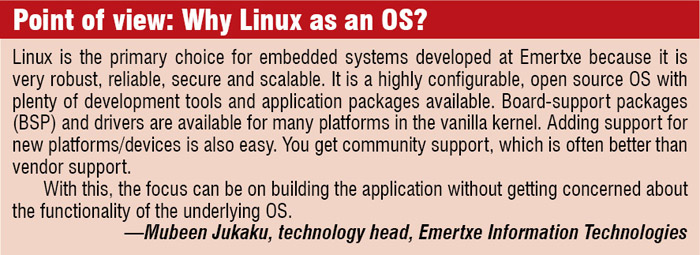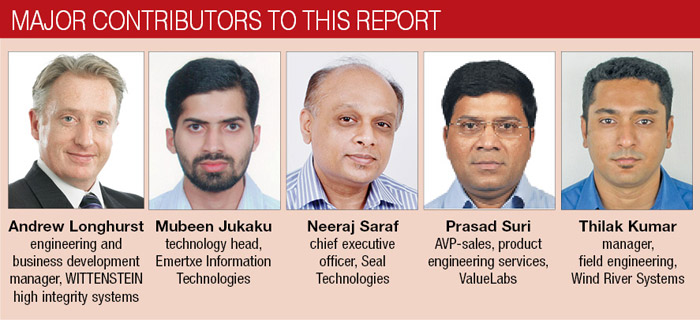Trends in selection of an OS
“We have seen an increase in the use of multi-core devices,” notes Longhurst. This presents an interesting challenge to OS suppliers, as the OS also needs to support core-to-core communication and asymmetrical and/or symmetrical processing models. He adds, “The type of OS support required is highly dependent upon the architecture of the application. Therefore a one-size-fits-all approach is not appropriate, as each solution will require a certain amount of customisation to achieve an optimum design.”

Another obvious trend is related to the Internet of Things (IoT) or machine-to-machine (M2M) communication, where embedded devices that existed in isolation in the past need to be connected now. Kumar says, “Connectivity is essential for better manageability of assets, which allows businesses to move from a device-centric model to a service-oriented model. With connectivity, there is also the threat of security that needs to be addressed.”
The other very prominent trend is software defined networking (SDN) and network function virtualisation (NFV). He adds, “This is driving consolidation of efforts in the networking and telecommunication markets where delivering carrier-grade reliability, while also achieving high-performance throughput with minimal latency, is absolutely essential.”
Platform era. There has always been a need to tailor-make embedded OSes for specific application domains. Many times this is like re-inventing the wheel and often unnecessary. Jukaku notes, “Recently, there has been a trend in building domain-specific OSes or software stacks that consist of the OS, application stack, framework and development environments—commonly known as platform.” Citing an example, he explains, “In the automotive industry, there is automotive-grade Linux, which is a Linux based software stack for the connected car. Google is also bringing Android to the car with Android auto. Similarly, in the IoT space, ARM has come up with mbed OS for IoT devices.”
Adoption of open source. Another trend seen is the wide adoption of open source software in the embedded space. Jukaku says, “Organisations are adopting open source software because of their reliability, stability, accuracy, cost, openness and support.”

Choose wisely, build effectively
It is not only the OS functionality and features that you will need to consider, but also the licensing model that will work best for your project’s budget and the company’s return on investment. Longhurst says, “The company behind the OS is just as important as selecting the correct OS itself.” He adds, “Ideally you want to build a relationship with the OS supplier that can support not only your current product but also products of the future. To do this, you need to select a proactive supplier with a good reputation, working with leading silicon manufacturers to ensure they can support the latest processors and tools.” Trust, quality of product and quality of support is everything.
From skill point of view, Jukaku says, “Understanding the architecture of the OS, integrating appropriate board-support packages, hardware interfacing and customising, and tuning for specific needs are all very important to have.” These skills make the OS easier for a new product designer to get started with.










